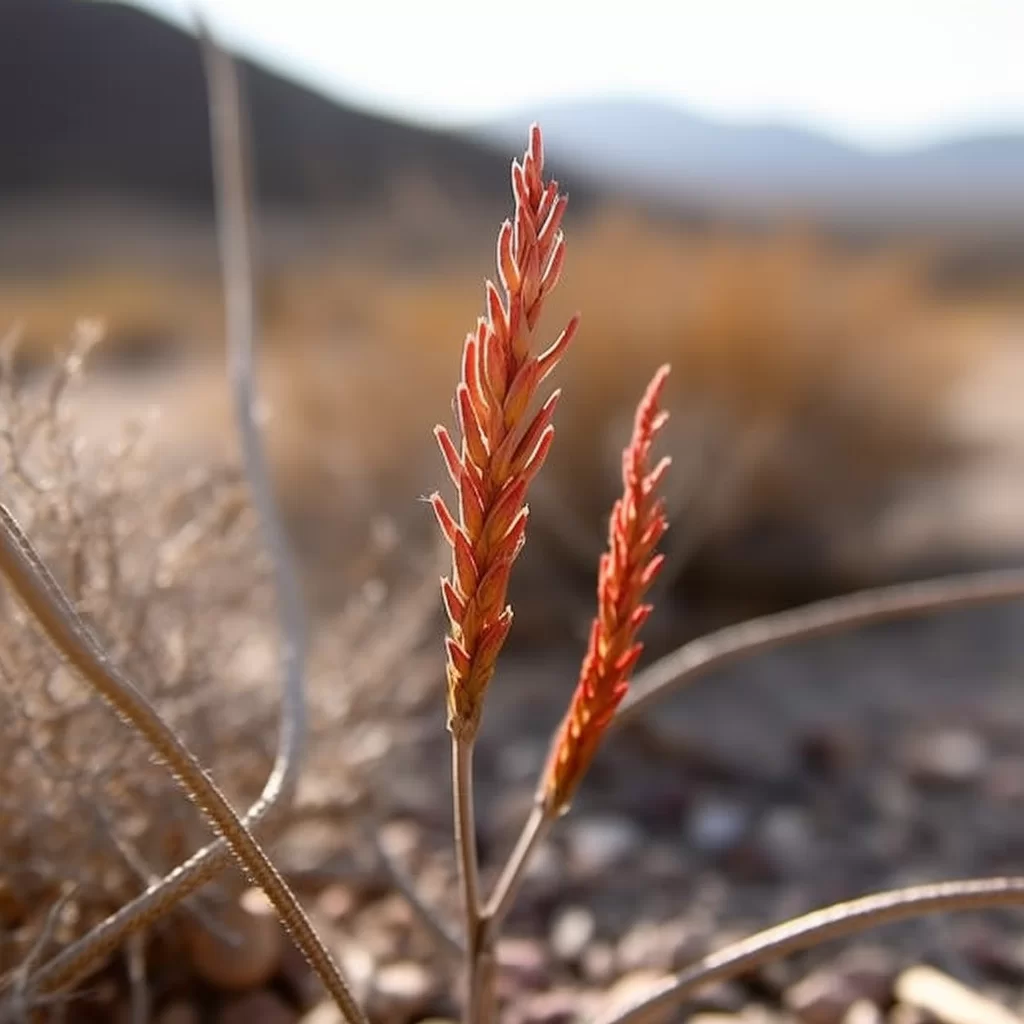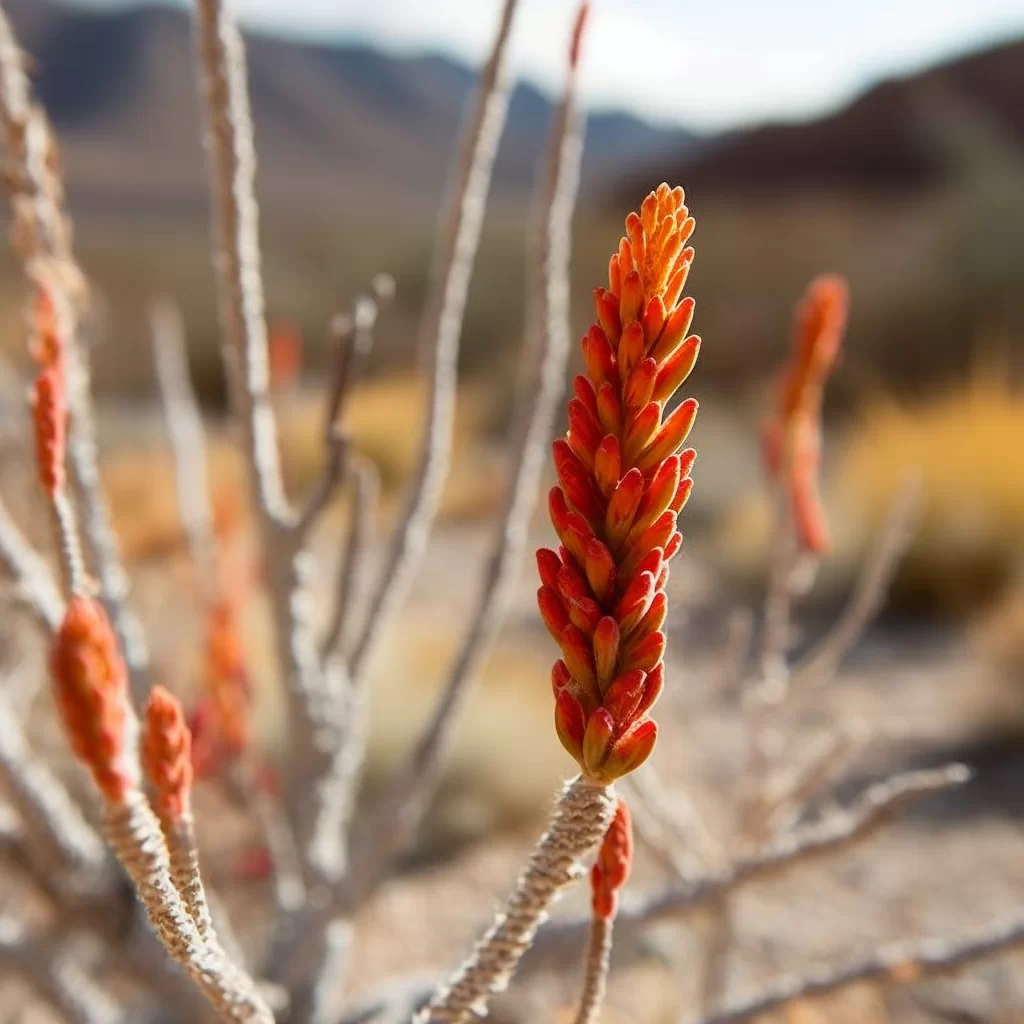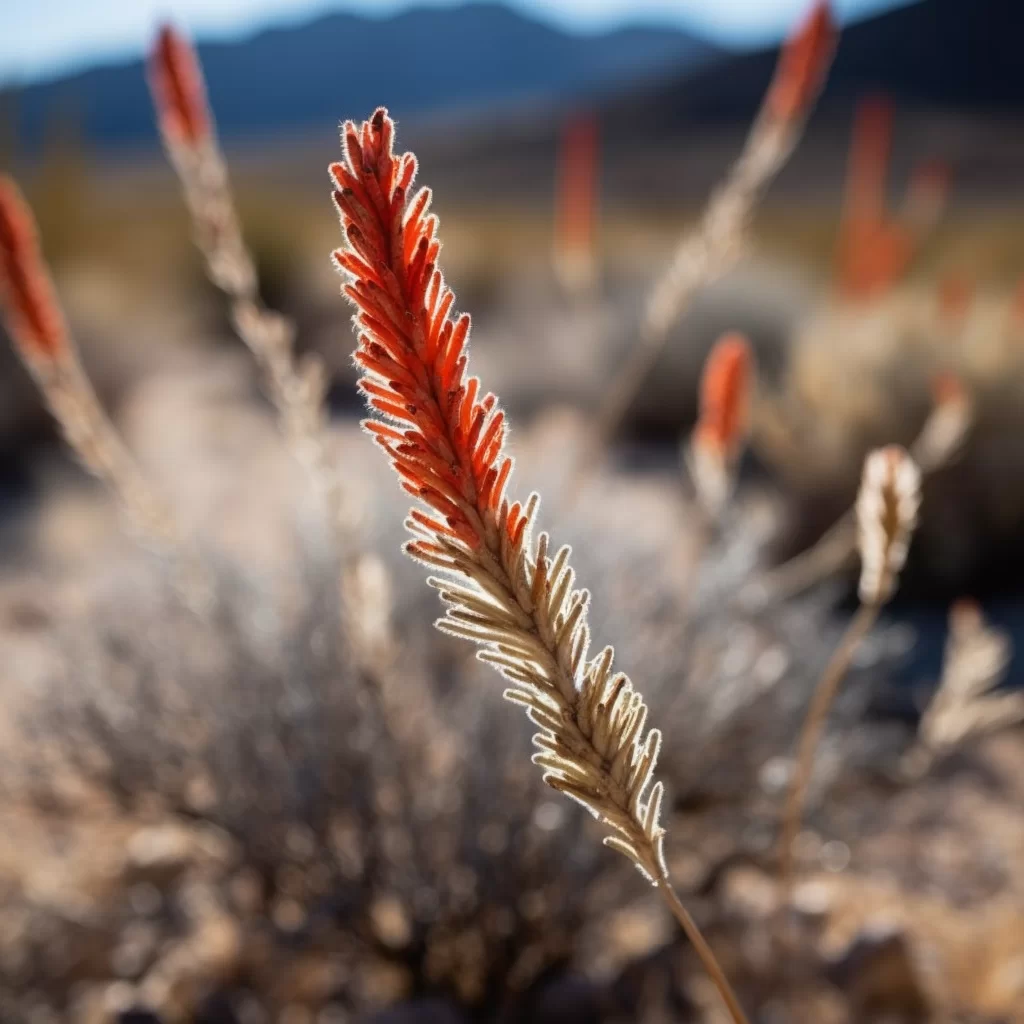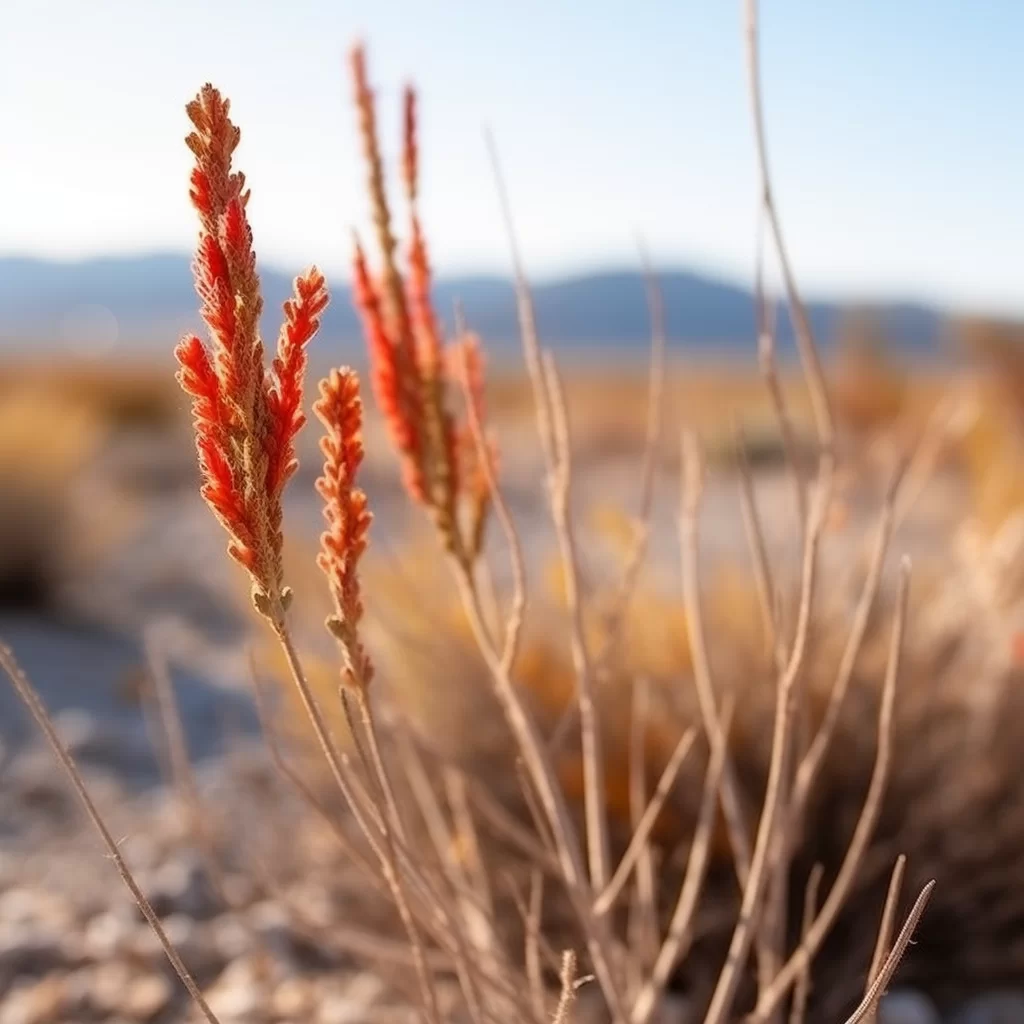Story of Day :
The Ocotillo Plant: A Complete Guide and Care Tips
If you’re tired of the same old plants and want something unique, the ocotillo plant is worth considering.
This spiky shrub is native to dry desert areas in the southwestern United States and Mexico, which means it’s perfect for those who don’t have a lot of time or energy to devote to gardening.
Don’t let its prickly appearance fool you – the ocotillo plant can add beauty and interest to any garden or landscape.The ocotillo plant has adapted well to its harsh environment, which makes it an easy-to-care-for choice for those who live in hot, dry regions.
Its unique shape and branching pattern make it a standout addition that will surely catch any visitor’s eye.
By planting an ocotillo shrub in your garden or landscape, you’ll not only be enhancing its natural beauty but also adding value with minimal care required.
So if you’re looking for a striking yet low-maintenance plant that can withstand extreme conditions while adding interest to your outdoor space, consider giving the ocotillo a try!
Overview of Ocotillo Plant
The ocotillo plant is a unique member of the Fouquieriaceae family that can grow up to 20 feet tall with spiny stems that can reach up to 30 feet in length.
It’s known for its small leaves that only appear briefly after rain or during active growth periods, and its bright red-orange tubular flowers, which bloom in springtime.
Its long spiny stems give it an unusual appearance and make it stand out from other plants.
The ocotillo’s blooms are a beautiful sight to behold and attract bees and other pollinators. The ocotillo plant is not only aesthetically pleasing but also serves several purposes.
The ocotillo plant is not only aesthetically pleasing but also serves several purposes.
For years, indigenous people have used its resin as medicine for various ailments such as sore throats and arthritis.
The dried stems of the plant are also useful for making fences, roofs, posts, and even hunting tools due to their hardiness.
This fascinating desert plant is not just an ornamental addition; it has cultural significance as well as practical uses!
- The ocotillo is a deciduous shrub, meaning it loses its leaves during periods of drought.
- Ocotillos are well adapted to arid conditions but can also tolerate some shade.
- The ocotillo’s scientific name was given by Adolphe Theodore Brongniart in honor of Mexican physician Leonardo Martinez de Ocotlán.
Looking to add a unique and striking plant to your garden or landscape? Consider the Ocotillo plant! These desert natives can grow up to 20 feet tall and produce beautiful, bright red flowers in the spring.
To successfully cultivate an Ocotillo, you’ll need to choose a location that offers full sun exposure and well-draining soil.
It’s also important to give them plenty of space as they can spread out quite dramatically.Once established, caring for your Ocotillo is fairly low maintenance.
They are drought-tolerant but will benefit from occasional watering during extended dry periods.
Pruning is also recommended every few years to keep their shape tidy and encourage new growth.
Keep in mind that while Ocotillos may appear dead during periods of drought or cold weather, they are actually just dormant until conditions improve.
With proper care, an Ocotillo can add a stunning focal point to any arid landscape!  In addition to their striking appearance and relatively easy maintenance requirements, there are other reasons why you might want to consider adding an Ocotillo plant to your home or garden.
In addition to their striking appearance and relatively easy maintenance requirements, there are other reasons why you might want to consider adding an Ocotillo plant to your home or garden.
For one thing, these plants have been used medicinally by indigenous cultures for centuries; some believe they have anti-inflammatory properties that can help with a variety of ailments such as arthritis pain or skin irritation.
Additionally, because they are native plants that require very little water once established (and no fertilizer), they could be a great choice for anyone looking for more sustainable landscaping options or trying to reduce their overall water usage
Are you thinking about growing an ocotillo plant? Well, it’s not as difficult as you might think.
To take care of it, here are some simple tips to follow.
First and foremost, make sure to plant your ocotillo in well-draining soil.
These plants prefer dry environments and can succumb to root rot if the soil is too moist.
Additionally, they require full sun exposure for at least six hours per day.While ocotillos are drought-tolerant plants, they still need water occasionally.
During the first year after planting, water your ocotillo once every two weeks or so in dry seasons.
After that time period has passed and the plant is established in its environment, watering can be reduced to once a month or less if there is adequate rainfall in your area.
By following these simple steps, you can enjoy this unique desert beauty on your own property!
Ocotillos are unique plants that require specific soil conditions to thrive.
They prefer sandy or gravelly soil that provides good drainage as they cannot tolerate water standing around their roots.
It’s essential to avoid adding organic matter such as compost or manure when planting an Ocotea, as it may cause the plant to rot.
The key is to ensure the soil is well-draining and allows enough space for the roots to penetrate deeply into the ground. In summary, if you’re looking to grow Ocotillos in your garden, make sure you provide them with proper soil conditions.
In summary, if you’re looking to grow Ocotillos in your garden, make sure you provide them with proper soil conditions.
Sandy or gravelly soils are preferable with adequate drainage and ample space for root penetration.
Avoid adding compost or manure during planting, which could lead to rotting of the plant.
By following these guidelines, your Ocotillo plants will have a strong foundation and be well-equipped for long-term growth and success in their new environment!
Watering:
Ocotillo plants are incredibly hardy and can tolerate dry spells, but when they’re newly planted, they require regular watering to establish themselves.
It’s recommended that you water them thoroughly a few times a month during the hot summer months to ensure that their roots grow deep and strong.
However, it’s important not to overwater them as this can lead to root rot or fungal diseases which can damage or even kill your plant.Although ocotillo plants have an impressive drought tolerance, giving them some TLC in the form of occasional watering is crucial for their longevity.
During the establishment process when planting these desert beauties, providing consistent moisture is essential for root development.
But be wary of overdoing it: too much water will make roots waterlogged and increase susceptibility to harmful diseases that could harm your plant’s health.
By striking a balance between enough hydration without going overboard on watering frequency or volume, you’ll set your ocotillo up for success in even the driest climates!
 When it comes to growing plants, sunlight is one of the most important factors to consider.
When it comes to growing plants, sunlight is one of the most important factors to consider.
Different types of plants require different amounts of sunlight, and understanding these requirements is crucial for their growth and well-being.
Some plants thrive in full sun, while others prefer partial shade or even complete shade.Plants that need a lot of sunlight typically have leaves that are adapted to capture more light, such as broad leaves or thin needles.
These include vegetables like tomatoes and peppers, as well as many flowering plants like roses and sunflowers.
On the other hand, shade-loving plants often have larger leaves to maximize their exposure to limited light.
Examples include ferns and hostas.
By providing the right amount of sunlight for your specific plant species, you can ensure healthy growth and a bountiful harvest or bloom season! In general terms, direct sunlight is necessary for photosynthesis – the process by which plants make food from carbon dioxide and water using energy from the sun.
However too much exposure to bright rays can also be harmful – especially during peak hours when UV radiation levels are high – causing stress or overheating on delicate foliage leading then slowly drying out.Therefore it’s important to learn about each plant’s unique needs before deciding where they should be placed in your garden or houseplants collection: some will thrive under bright windowsills while others will benefit from a shaded spot near a window with filtered light instead! Whether you’re an expert gardener looking for ways to optimize your plant growth or simply starting out with some
Ocotillos are a type of plant that require abundant sunlight to thrive.
Their ideal living conditions consist of hot and arid climates with temperatures ranging between 70°F-100°F (21°C-38°C).
In these environments, ocotillos can flourish by using their long branches to absorb as much sunlight as possible.
Therefore, if you want to grow ocotillos in your garden or yard, it is important to choose an area that receives direct sunlight for most of the day.In summary, ocotillo plants are highly dependent on sun exposure and temperature levels for their survival.
These desert-dwelling plants can only thrive in regions where they receive full sun and dry heat.
If you’re planning on growing them yourself, make sure that the location provides ample light throughout the day so that they can soak up enough energy from the sun’s rays to remain healthy and vibrant!
Pruning is the process of removing specific branches or stems from a plant to help it grow and develop better.
This technique is used by gardeners, farmers, and arborists to enhance the health, appearance, and productivity of plants.
Pruning can be done for various reasons such as promoting better airflow within dense foliage to reduce disease risk, removing damaged or diseased branches that pose a threat to overall plant health, or shaping plants into attractive forms.
It’s important to use appropriate pruning techniques depending on the type of plant being pruned because improper cuts can lead to disease susceptibility or poor regrowth.Pruning has several benefits beyond just improving quality of growth; it also helps maintain safety by preventing hazards like falling branches from overgrown trees and promotes sustainability by allowing plants to thrive with less water consumption.
Regular pruning also offers an opportunity for gardeners and landscapers to closely observe their plants’ development over time.
Overall, pruning is an essential activity that helps keep our outdoor environments healthy while also offering an aesthetically pleasing appearance in our gardens and landscapes.
If you own an ocotillo plant and need to prune it, be sure to do so in the winter when the plant is dormant.
During this time, the plant sheds its leaves and becomes less susceptible to damage.
To ensure healthy growth during the next season, remove any dead or damaged branches just above where new growth is visible.
Be careful not to cut too close down below as that could cause harm to new growth buds.Pruning your ocotillo plant in winter is essential for maintaining its health throughout the year.
Removing dead or damaged branches will help prevent disease and encourage healthy growth of new shoots come springtime.
When pruning, always aim for cutting just above visible signs of new life on your plant’s stems – this will ensure that you don’t accidentally damage any developing buds while also promoting stronger regrowth later on!
When it comes to ocotillo plants, there are some common problems that gardeners might encounter.
One issue is drought stress, as these plants thrive in dry conditions but can suffer if they don’t receive enough water.
Signs of drought stress include wilting or drooping leaves, as well as brown or crispy stems.
To remedy this problem, it’s important to water the plant deeply and allow the soil to dry out between watering sessions.Another potential issue for ocotillo plants is damage from pests such as scale insects or spider mites.
These tiny critters can leave behind signs such as sticky residue on leaves, yellowing foliage, and stunted growth.
To address pest infestations on ocotillo plants, it’s recommended to use an insecticidal soap or oil spray designed specifically for these types of pests.
Additionally, pruning damaged branches and keeping the plant healthy through proper watering and fertilization can help prevent future pest problems in the garden.
Ocotillos, known for their striking appearance and low-maintenance nature, are popular among gardening enthusiasts.
However, it is important to note that these resilient plants are not exempt from encountering problems just like any other plant species.
If not given proper care and attention, ocotillos may fall prey to common issues such as pest infestations or disease outbreaks.To ensure the longevity of your ocotillo plant and maintain its health, you must take adequate measures in caring for it.
These measures may include ensuring proper watering schedules and soil conditions, regular pruning and trimming maintenance activities, as well as vigilantly monitoring its growth patterns for signs of disease or pest issues.
By taking proactive steps in tending to your ocotillo plant’s needs, you can prevent potential problems from arising and enjoy this beautiful desert succulent for years to come.If you’re a proud owner of an ocotillo plant, it’s important to know some of the common issues that may arise.
For instance, during droughts or prolonged dry spells, your plant may lose its leaves or appear wilted.
Another problem could be the appearance of pests like aphids or scale insects that can cause harm to your ocotillo’s stems.
Moreover, if your plant is not receiving adequate sunlight or water, it may grow weak and floppy.However, don’t fret just yet because there are ways to overcome these problems! To start with, ensure you’re providing enough water during dry spells and sufficient sunlight throughout the year.
If pests have invaded your plants’ stems and branches, treat them with insecticides promptly.
In case you notice any wilting signs in the leaves or branches of your ocotillo plant due to a lack of irrigation systems such as drip irrigation for desert plants is always recommended by experts for better growth and maintenance directions from gardening experts can also help resolve any issues related to its health in no time!
If you’re a plant enthusiast, then dealing with pest infestations may have been an unwelcome challenge at some point.
Some of the most common pests that attack plants include aphids and caterpillars.
Aphids are tiny insects that feed on sap from leaves, which can result in yellowing or wilting of the affected plant.
However, this problem can be resolved by using an insecticidal soap spray as soon as possible after noticing aphids on your plant.
As for caterpillars, these insects can cause defoliation of the ocotillo plant.
The good news is that you can remove them by hand manually or apply a natural biological control like Bacillus thuringiensis.It’s essential to take prompt action if you notice any signs of pest infestation to prevent further damage to your plants.
With the right approach and tools in place, managing pests shouldn’t be overwhelming for any gardener or homeowner who loves their greenery and wants it thriving throughout the year!When it comes to taking care of your ocotillo plant, there are a number of disease outbreaks that you’ll want to keep an eye out for.
One common issue is root rot, which can occur if you over-water the plant.
To solve this problem, it’s important to replant the ocotillo in fresh soil that has proper drainage and reduce watering frequency going forward.
Another common issue is fungal infections like powdery mildew which can cause white powder on the leaves of the plant.
In order to prevent these infections from spreading further throughout your garden area, it’s important to remove and dispose of affected plants in trash bags far away from your other plants.Keeping your ocotillo healthy and thriving requires some careful attention – especially when it comes to disease prevention! Root rot is one common disease outbreak that can be caused by over-watering or poor drainage in the soil.
If you notice any signs of this problem (such as yellowing leaves), make sure to replant in fresh soil with proper drainage and reduce watering frequency going forward.
Fungal infections like powdery mildew can also affect your ocotillo by causing white powder on its leaves; if left untreated, such infections may spread throughout your garden area and infect other plants as well! To avoid further damage from these diseases, make sure to remove affected plants promptly and dispose of them safely away from other plants in order prevent further infection spread around the garden space.
In summary, the conclusion serves as the final statement of a written work or speech.
It provides a concise overview of the main points discussed throughout and offers a closing thought or call to action.
The purpose of the conclusion is to leave a lasting impression on the audience and leave them with something to ponder or act upon.It’s important to note that an effective conclusion should not introduce any new information but rather tie together all the ideas presented in an organized and succinct manner.
Additionally, it should be tailored to fit the tone and purpose of the piece, whether it’s persuasive, informative, or entertaining.
Overall, a well-crafted conclusion can make all the difference in leaving readers with a positive impression and ensuring that they remember your message long after they’ve finished reading or listening.
The ocotillo plant is an extraordinary shrub that requires minimal upkeep and adds an enchanting touch to any outdoor space.
It possesses unique characteristics, making it stand out among other plants, while also providing significant ecological advantages.
Ensuring that your ocotillo plant is properly taken care of is essential for its prosperity and longevity.
By adhering to the tips provided above, you can maintain a healthy-looking and lively plant that will flourish for years.The ocotillo plant’s low-maintenance nature makes it a great addition to any garden or landscape.
Not only does it enhance the aesthetics of your outdoor space, but it also contributes greatly to our environment by providing oxygen and absorbing carbon dioxide.
Taking care of this unique shrub may seem daunting at first, but with proper knowledge and guidance, anyone can do it successfully.
By following the simple guidelines outlined above, you’ll have a thriving ocotillo plant that will continue to bring beauty and environmental benefits into your life for many years ahead!